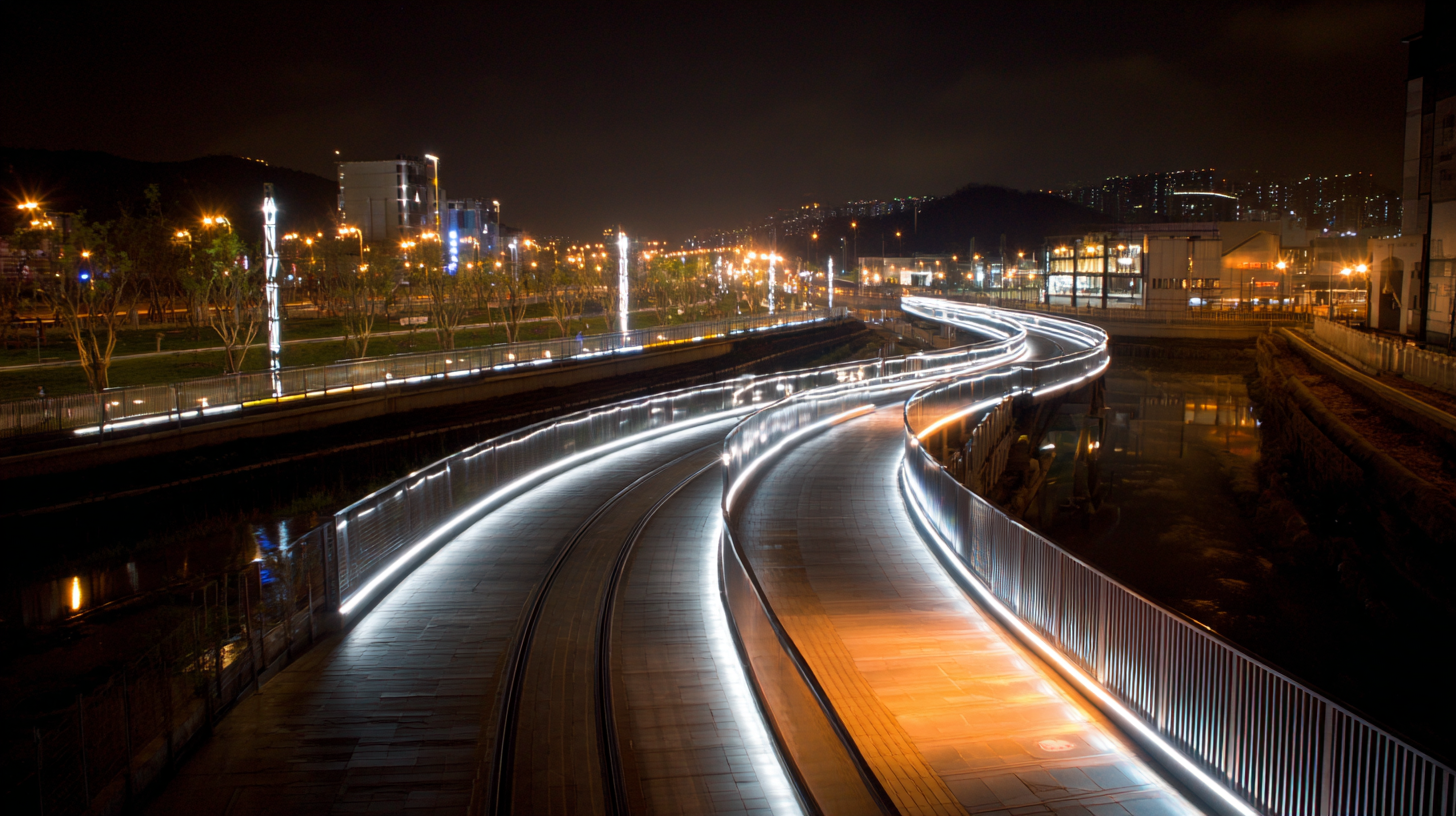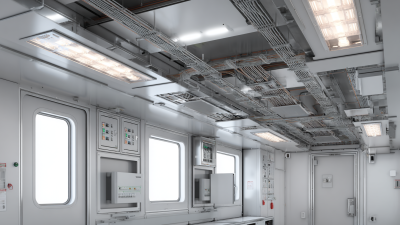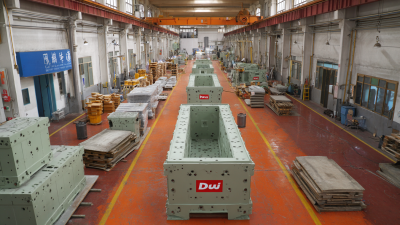Leave Your Message
-
Phone
-
E-mail
-
Whatsapp
-
Whatsapp


The integration of Lighting Busway systems into modern infrastructure offers transformative benefits that can significantly enhance energy efficiency, flexibility, and sustainability in buildings. According to the International Energy Agency, lighting accounts for approximately 15% of global electricity consumption, making it one of the most critical areas for energy savings. A report by MarketsandMarkets highlights that the adoption of advanced busway systems can reduce energy consumption by up to 25%, providing substantial cost savings for both commercial and industrial applications.

Additionally, the modular nature of Lighting Busway allows for quicker installations and easy scalability, essential in rapidly evolving urban environments. As cities become smarter and more interconnected, the role of innovative solutions like Lighting Busway systems will be pivotal in meeting both operational demands and environmental targets.
Lighting busway systems are gaining traction in modern infrastructure due to their versatility and efficiency. These systems consist primarily of conductor bars, fittings, and power distribution units, working together to facilitate the efficient transfer of electrical energy. According to a report by MarketsandMarkets, the global busway market is projected to reach $8.7 billion by 2027, underlining the growing adoption of this technology in various sectors, including commercial and industrial applications.
One of the key features of lighting busway systems is their modular design, which allows for easy expansion and reconfiguration as the infrastructure evolves. This flexibility not only minimizes downtime during upgrades but also reduces installation costs by simplifying the process. Additionally, the integrated lighting control systems can leverage IoT technology, providing real-time monitoring and energy management capabilities.
Tip: When designing a lighting busway system, assess the overall load requirements and future expansion plans to ensure optimal performance and compliance with electrical codes. It’s essential to involve qualified professionals early in the design process to maximize safety and efficiency.
Moreover, the compact nature of lighting busway systems enables more efficient use of vertical space in facilities, a significant benefit in urban environments where real estate is limited. As cities continue to expand, optimizing space will become increasingly crucial for infrastructure development.
Tip: Consider implementing energy-efficient LED fixtures within the busway system, as this can lead to a reduction in energy consumption by up to 75%, thereby decreasing operational costs and carbon footprint.
The implementation of lighting busway systems in urban design offers numerous advantages that can transform public transportation and enhance the overall urban experience. A key benefit lies in the integration of innovative technologies, such as all-electric transport solutions and dedicated transit lanes, which can streamline operations and increase efficiency. For instance, recent infrastructure upgrades, like those seen in Brisbane, have revamped bus routes to facilitate faster transit times while reducing congestion, thereby making public transport a more viable option for commuters.
Moreover, the design of lighting busways can significantly improve safety and accessibility. Well-lit and clearly marked busways enhance visibility for both drivers and pedestrians, minimizing accidents and fostering a more inclusive environment for all users. This focus on integrated urban planning not only boosts public transport ridership but also contributes to a more sustainable and connected city. As cities increasingly adopt dedicated bus rapid transit systems, the role of such lighting busway systems becomes crucial in shaping the future of urban mobility.
 Lighting busway systems are increasingly recognized as superior alternatives to traditional wiring solutions in modern infrastructure. According to a report by the International Energy Agency, busways can improve energy efficiency by up to 20% compared to conventional wiring. This is due to their modular design, which allows for easier modifications and expansions without the need for rewiring. Traditional wiring solutions often fall short in flexibility, requiring significant time and resource investments to adapt to changing needs.
Lighting busway systems are increasingly recognized as superior alternatives to traditional wiring solutions in modern infrastructure. According to a report by the International Energy Agency, busways can improve energy efficiency by up to 20% compared to conventional wiring. This is due to their modular design, which allows for easier modifications and expansions without the need for rewiring. Traditional wiring solutions often fall short in flexibility, requiring significant time and resource investments to adapt to changing needs.
One of the key advantages of lighting busway systems is their scalability and ease of installation. As per a study by the Electrical Contractors Association, busways can reduce installation time by as much as 30%, allowing projects to proceed without costly delays. This efficiency is particularly beneficial in commercial settings where time is money. Moreover, the integrated design of busway systems enables improved load management, enhancing safety and reliability.
Tips: When considering a lighting solution, assess your long-term infrastructure plans. Opting for lighting busways can save both time and money in the long run. Additionally, evaluate the potential energy savings; a more efficient system often translates to lower utility bills. Always consult with an expert to ensure that your choice aligns with your building's specific needs.
Lighting Busway Systems have emerged as a transformative solution in modern infrastructure, particularly in large-scale applications. Various case studies highlight their successful implementation, demonstrating increased efficiency and flexibility in lighting design.
For instance, in a recent high-rise project in New York City, the integration of lighting busway systems allowed for a dynamic lighting setup that could easily adapt to different tenant requirements without extensive rewiring. This not only reduced downtime but also significantly cut costs associated with retrofitting.
Tips: When considering lighting busway systems for your project, ensure that the layout is designed for future adaptability. This will make it easier to incorporate new technologies or changing needs without a complete overhaul. In another case, a regional airport revamped its terminal lighting using busway systems, enhancing both visibility and energy efficiency. Such systems allow for an incremental approach to upgrading lighting fixtures, maintaining a modernized ambiance while being budget-friendly.
Furthermore, the flexibility offered by these systems lets facilities easily reconfigure lighting setups for events, or seasonal requirements without permanent installations. Each case study emphasizes the necessity of planning for both immediate and long-term lighting needs, reflecting the evolving nature of urban infrastructure.
As urban areas continue to expand and traffic congestion escalates, innovative solutions in lighting technology become essential. Lighting busway systems present a transformative pattern in modern infrastructure, facilitating not only improved safety and visibility but also optimization of traffic flow. Integrating these systems with smart technologies allows for real-time adjustments based on traffic conditions, which can significantly enhance the overall driving experience.

Future trends in lighting busway technology are leaning towards the integration of renewable energy sources and intelligent networking capabilities. Solar-powered lighting systems are emerging as a sustainable alternative, reducing reliance on traditional power sources and lowering operational costs. Moreover, advancements in IoT and AI are paving the way for smart lighting solutions that adapt to environmental changes and traffic patterns, potentially alleviating some of the burdens associated with increasing vehicle numbers on the roads. This synergy between innovative lighting and smart traffic management could serve as a crucial component in addressing future infrastructural challenges.






